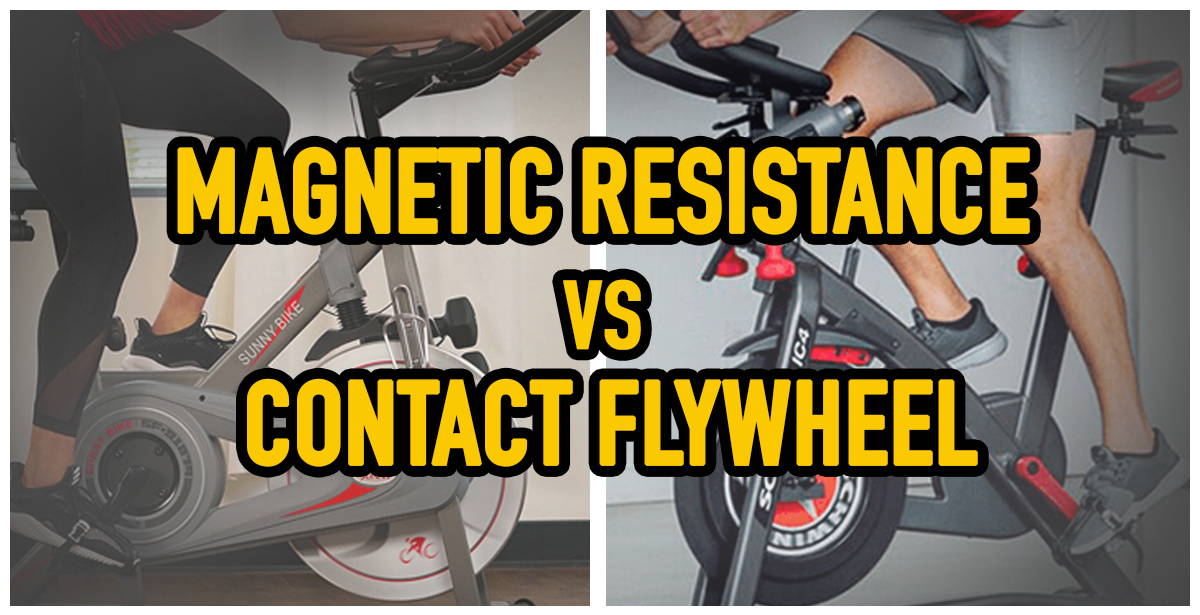
Unlocking Your Fitness Potential: A Comprehensive Guide to Magnetic Resistance Bikes
In the ever-evolving landscape of home fitness equipment, the magnetic resistance bike has emerged as a popular and effective tool for achieving a wide range of fitness goals. Whether you’re a seasoned athlete or just beginning your fitness journey, understanding the benefits and features of a magnetic resistance bike can help you make an informed decision and maximize your workout potential. This comprehensive guide will delve into the mechanics, advantages, and considerations surrounding magnetic resistance bikes, providing you with the knowledge you need to choose the right model and incorporate it into your fitness routine.
What is a Magnetic Resistance Bike?
Unlike traditional exercise bikes that use friction-based resistance systems (such as direct contact or fan-based systems), magnetic resistance bikes utilize magnets to control the intensity of your workout. These bikes feature a flywheel and magnets that are positioned close to it. As you pedal, the magnets create resistance without actually touching the flywheel. The closer the magnets are to the flywheel, the greater the resistance, and vice versa. This system offers several advantages over other resistance methods.
The Mechanics of Magnetic Resistance
Understanding how magnetic resistance bikes work is crucial to appreciating their benefits. The key components are the flywheel and the magnets. The flywheel is a weighted disc that spins as you pedal. The magnets are positioned near the flywheel and can be adjusted to increase or decrease the magnetic field. This magnetic field creates resistance, making it harder or easier to pedal. The resistance level is typically controlled by a knob or electronic console, allowing you to fine-tune your workout intensity. The absence of physical contact between the magnets and the flywheel results in a smoother, quieter, and more durable system compared to friction-based alternatives.
Benefits of Using a Magnetic Resistance Bike
Magnetic resistance bikes offer a multitude of benefits that contribute to an effective and enjoyable workout experience. Here are some of the key advantages:
- Smooth and Quiet Operation: One of the most significant advantages is the smooth and virtually silent operation. The absence of friction eliminates the noise associated with other types of exercise bikes, making it ideal for home use, especially in shared living spaces.
- Precise and Consistent Resistance: Magnetic resistance bikes provide precise and consistent resistance levels. This allows you to accurately track your progress and tailor your workouts to specific fitness goals. The resistance can be adjusted in small increments, offering a wide range of intensity options.
- Low Maintenance: With no friction-based components, magnetic resistance bikes require minimal maintenance. There are no brake pads to replace or surfaces to lubricate, saving you time and money in the long run.
- Durability: The contactless resistance system significantly extends the lifespan of the bike. The absence of wear and tear on the flywheel and magnets ensures that the bike will provide reliable performance for years to come.
- Variety of Workout Options: Magnetic resistance bikes are suitable for a wide range of workout types, from low-impact cardio to high-intensity interval training (HIIT). The adjustable resistance levels allow you to customize your workouts to match your fitness level and goals.
- Data Tracking and Connectivity: Many modern magnetic resistance bikes come equipped with electronic consoles that track various metrics, such as speed, distance, time, calories burned, and heart rate. Some models also offer Bluetooth connectivity, allowing you to sync your data with fitness apps and track your progress over time. [See also: Best Fitness Trackers for Home Workouts]
Types of Magnetic Resistance Bikes
While all magnetic resistance bikes share the same underlying technology, they come in various styles and configurations to suit different needs and preferences. Here are some of the most common types:
Upright Bikes
Upright bikes are the most traditional type of exercise bike. They feature a vertical frame and a seat that positions you in an upright posture. Upright bikes are a good option for those who want a more challenging workout that engages the core muscles. They often have smaller footprints than other types of exercise bikes, making them suitable for smaller spaces.
Recumbent Bikes
Recumbent bikes feature a reclined seat with a backrest, providing excellent support for the lower back. This makes them a good choice for individuals with back pain or mobility issues. Recumbent bikes also tend to be more comfortable for longer workouts. The pedals are positioned in front of the seat, allowing for a more relaxed pedaling motion.
Spin Bikes (Indoor Cycling Bikes)
Spin bikes, also known as indoor cycling bikes, are designed to simulate the experience of riding a road bike. They feature a heavier flywheel and a more aggressive riding position. Spin bikes are ideal for high-intensity workouts and are often used in group fitness classes. They typically offer a wide range of resistance levels and allow for standing pedaling.
Folding Bikes
Folding magnetic resistance bikes are designed for portability and storage. They can be easily folded up and stored away when not in use, making them a good option for those with limited space. While they may not offer the same level of performance as other types of exercise bikes, they provide a convenient and effective way to get a workout at home.
Factors to Consider When Choosing a Magnetic Resistance Bike
With so many magnetic resistance bikes on the market, it can be challenging to choose the right one. Here are some key factors to consider:
- Budget: Magnetic resistance bikes range in price from a few hundred dollars to several thousand dollars. Determine your budget before you start shopping to narrow down your options.
- Features: Consider the features that are important to you, such as heart rate monitoring, Bluetooth connectivity, pre-programmed workouts, and adjustable resistance levels.
- Size and Weight Capacity: Make sure the bike is the right size for your body and that it can support your weight. Check the manufacturer’s specifications for weight capacity.
- Comfort: Choose a bike that is comfortable to ride. Consider the seat size and adjustability, as well as the handlebar position.
- Stability: Look for a bike with a sturdy frame and a wide base to ensure stability during your workouts.
- Warranty: Check the manufacturer’s warranty to ensure that you are protected against defects in materials and workmanship.
Incorporating a Magnetic Resistance Bike into Your Fitness Routine
Once you’ve chosen the right magnetic resistance bike, it’s time to incorporate it into your fitness routine. Here are some tips to help you get started:
- Start Slowly: If you’re new to exercise, start with short, low-intensity workouts and gradually increase the duration and intensity over time.
- Warm Up and Cool Down: Always warm up before each workout and cool down afterward to prevent injuries.
- Vary Your Workouts: Mix up your workouts to keep things interesting and challenge your body in different ways. Try interval training, hill climbs, and endurance rides. [See also: Effective Interval Training Workouts at Home]
- Listen to Your Body: Pay attention to your body and take rest days when needed. Don’t push yourself too hard, especially when you’re just starting out.
- Stay Hydrated: Drink plenty of water before, during, and after your workouts to stay hydrated.
- Use Proper Form: Maintain proper posture and pedaling technique to prevent injuries and maximize your workout efficiency.
Maintaining Your Magnetic Resistance Bike
While magnetic resistance bikes are relatively low-maintenance, it’s important to perform regular maintenance to keep your bike in good condition. Here are some tips:
- Wipe Down the Bike After Each Use: Wipe down the frame, seat, and handlebars with a damp cloth to remove sweat and dirt.
- Check the Pedals and Straps: Regularly check the pedals and straps for wear and tear. Replace them as needed.
- Tighten Loose Bolts: Periodically check all the bolts and screws on the bike and tighten them as needed.
- Lubricate Moving Parts: Lubricate the moving parts of the bike, such as the pedals and seat post, with a silicone-based lubricant.
- Consult the Owner’s Manual: Refer to the owner’s manual for specific maintenance instructions for your bike model.
Conclusion
A magnetic resistance bike is a valuable investment for anyone looking to improve their fitness at home. With its smooth and quiet operation, precise resistance levels, and low maintenance requirements, it offers a convenient and effective way to achieve your fitness goals. By understanding the mechanics, benefits, and considerations discussed in this guide, you can choose the right magnetic resistance bike for your needs and incorporate it into your fitness routine for a healthier and more active lifestyle. The versatility and adjustability of a magnetic resistance bike allows for a personalized workout experience, making it suitable for all fitness levels. Investing in a magnetic resistance bike is an investment in your long-term health and well-being. With proper use and maintenance, your magnetic resistance bike can be a reliable and effective tool for achieving your fitness aspirations for years to come.

